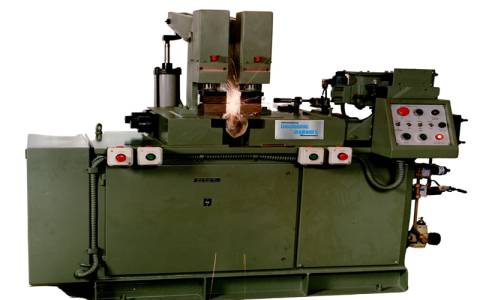Description
Flash Butt Welding: A Superior Joining Solution
Flash butt welding is a fusion welding process that joins two pieces of metal by applying pressure and heat to their abutting ends. This robust technique creates a homogenous weld with exceptional strength and minimal material waste, making it ideal for a wide range of applications across diverse industries. Unlike other welding methods, flash butt welding eliminates the need for filler materials, resulting in a cleaner, stronger, and more consistent joint.
How it Works:
The process involves several key steps:
- Clamping and Alignment: The two metal parts to be joined are precisely clamped and aligned in a specialized machine. Accurate alignment is critical for achieving a high-quality weld.
- Flashing: The clamped ends are brought into contact and then momentarily separated, creating a series of arcs (the "flash") that heat the surfaces. This precisely controlled flashing process cleans and prepares the surfaces for fusion. The flash is controlled through precise adjustments of current, pressure, and time.
- Upsetting: After the desired temperature is reached, the machine applies high pressure, forcing the softened metal ends together. This process, known as upsetting, completes the fusion of the metal, forging a solid, continuous joint.
- Cooling and Trimming: The welded joint is allowed to cool under controlled conditions to prevent cracking and ensure optimal microstructure. Finally, any excess weld metal (flash) is removed through trimming.
Advantages of Flash Butt Welding:
- High Strength and Quality: Produces a strong, homogenous weld with exceptional mechanical properties, matching or exceeding the strength of the base material.
- High Productivity: Automated processes allow for rapid welding cycles, resulting in high throughput and improved efficiency.
- Minimal Material Waste: The flashing process consumes minimal material compared to other methods, significantly reducing material costs.
- Precise Control: Advanced control systems allow for precise adjustments of parameters, ensuring consistent weld quality.
- Versatile Material Application: Suitable for a wide range of metals, including steel, aluminum, and copper alloys. Specific capabilities vary depending on the machine's capabilities and the specific metal being welded.
- Automated Capabilities: Flash butt welding machines are often highly automated, reducing reliance on skilled labor and improving repeatability.
- Reduced Distortion: Due to the localized heating and forging process, distortion is significantly minimized compared to other welding methods.
Applications:
Flash butt welding finds application in numerous industries, including:
- Railroad Track Manufacturing: Joining rails for efficient and reliable track construction.
- Pipe Manufacturing: Creating seamless pipes for various applications.
- Automotive Manufacturing: Joining structural components, particularly in high-strength applications.
- Construction: Joining reinforcing bars (rebar) for enhanced structural integrity.
- Aerospace: Joining components in high-strength applications requiring exceptional reliability.
Choosing the Right Flash Butt Welding System:
Selecting the appropriate flash butt welding system depends on several factors, including:
- Material type and thickness: Different metals and thicknesses require different welding parameters and equipment.
- Production volume: High-volume production necessitates automated systems with high throughput capabilities.
- Weld quality requirements: Specific applications may demand stringent quality standards.
Choosing a reputable supplier with expertise in flash butt welding is crucial for successful implementation.
Conclusion:
Flash butt welding provides a superior solution for joining metals, offering exceptional strength, high productivity, and minimal waste. Its versatility and precision make it a vital process in a wide array of industries. If you require a robust and efficient method for joining metal parts, flash butt welding may be the ideal solution for your needs.
